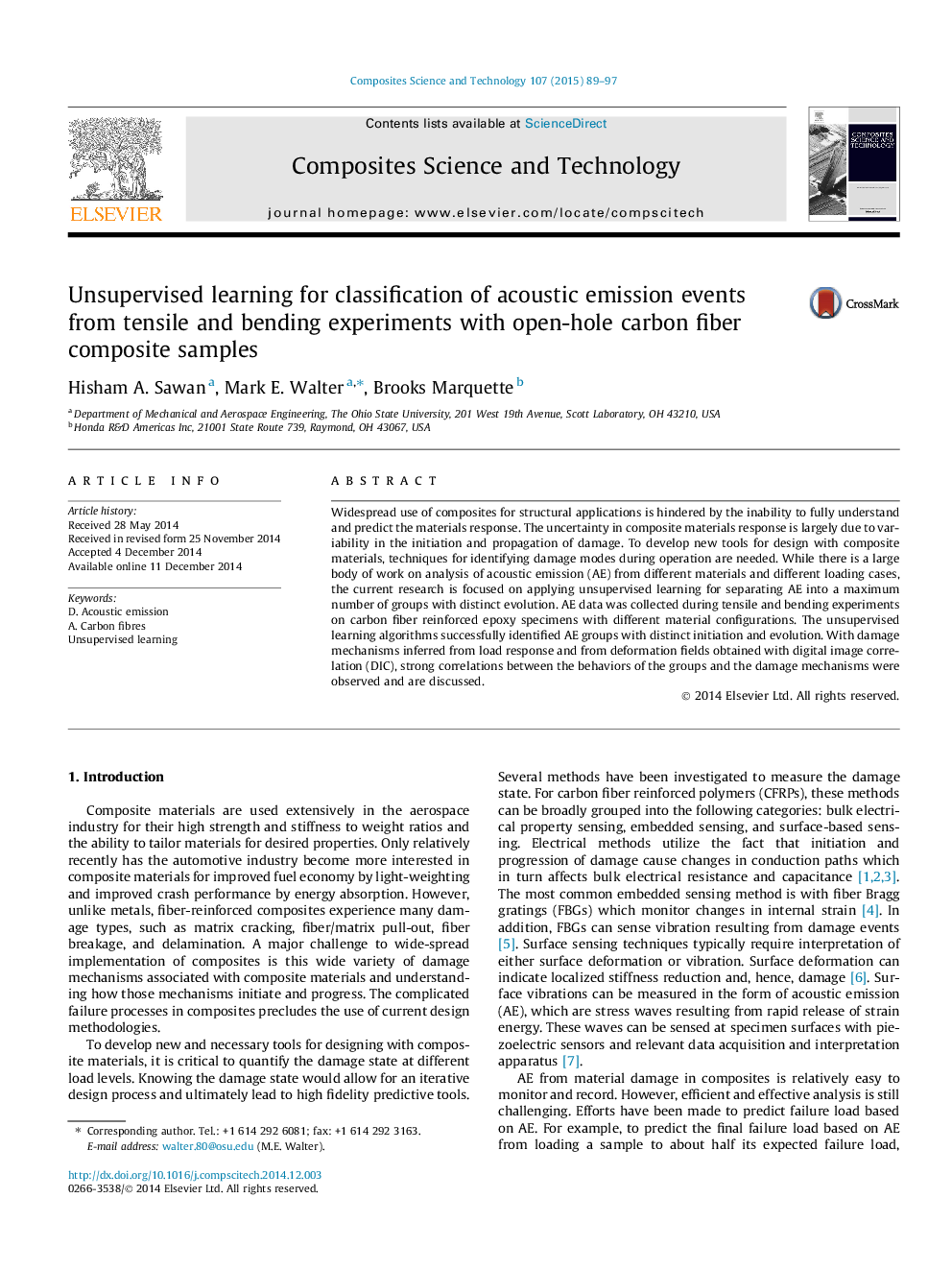| Article ID | Journal | Published Year | Pages | File Type |
|---|---|---|---|---|
| 820145 | Composites Science and Technology | 2015 | 9 Pages |
Widespread use of composites for structural applications is hindered by the inability to fully understand and predict the materials response. The uncertainty in composite materials response is largely due to variability in the initiation and propagation of damage. To develop new tools for design with composite materials, techniques for identifying damage modes during operation are needed. While there is a large body of work on analysis of acoustic emission (AE) from different materials and different loading cases, the current research is focused on applying unsupervised learning for separating AE into a maximum number of groups with distinct evolution. AE data was collected during tensile and bending experiments on carbon fiber reinforced epoxy specimens with different material configurations. The unsupervised learning algorithms successfully identified AE groups with distinct initiation and evolution. With damage mechanisms inferred from load response and from deformation fields obtained with digital image correlation (DIC), strong correlations between the behaviors of the groups and the damage mechanisms were observed and are discussed.
